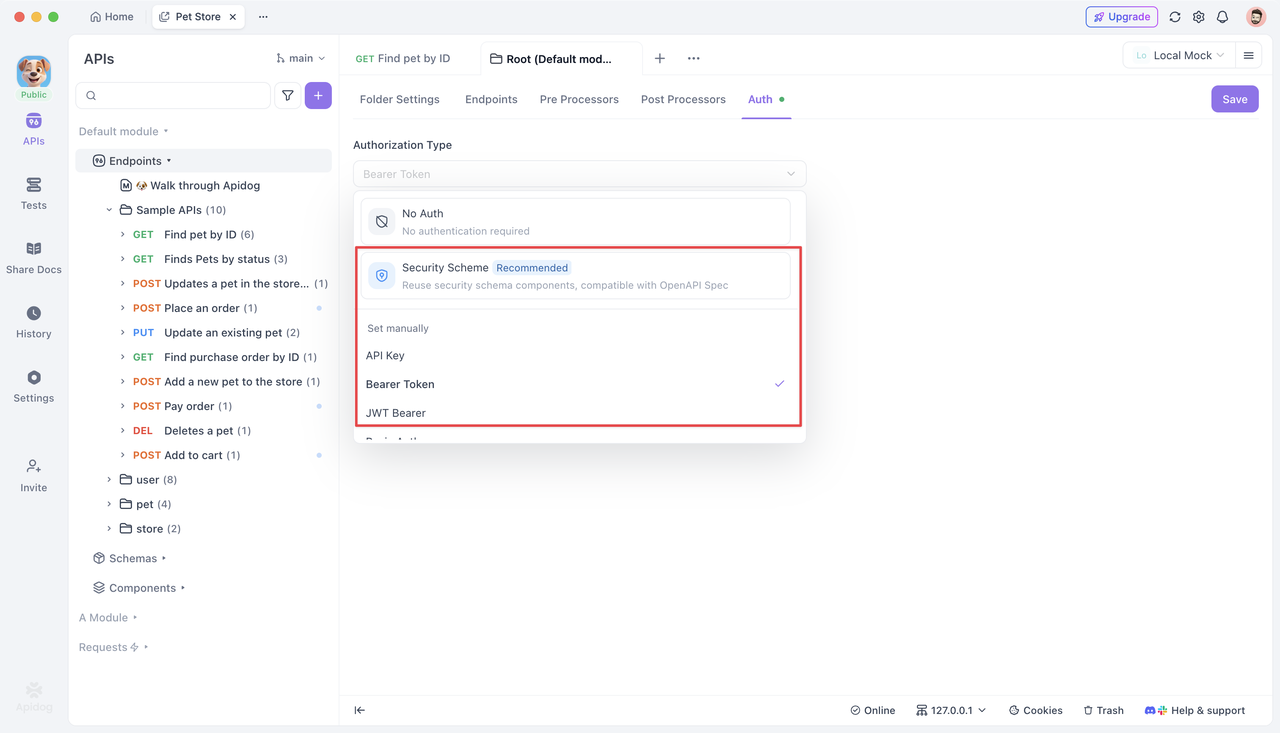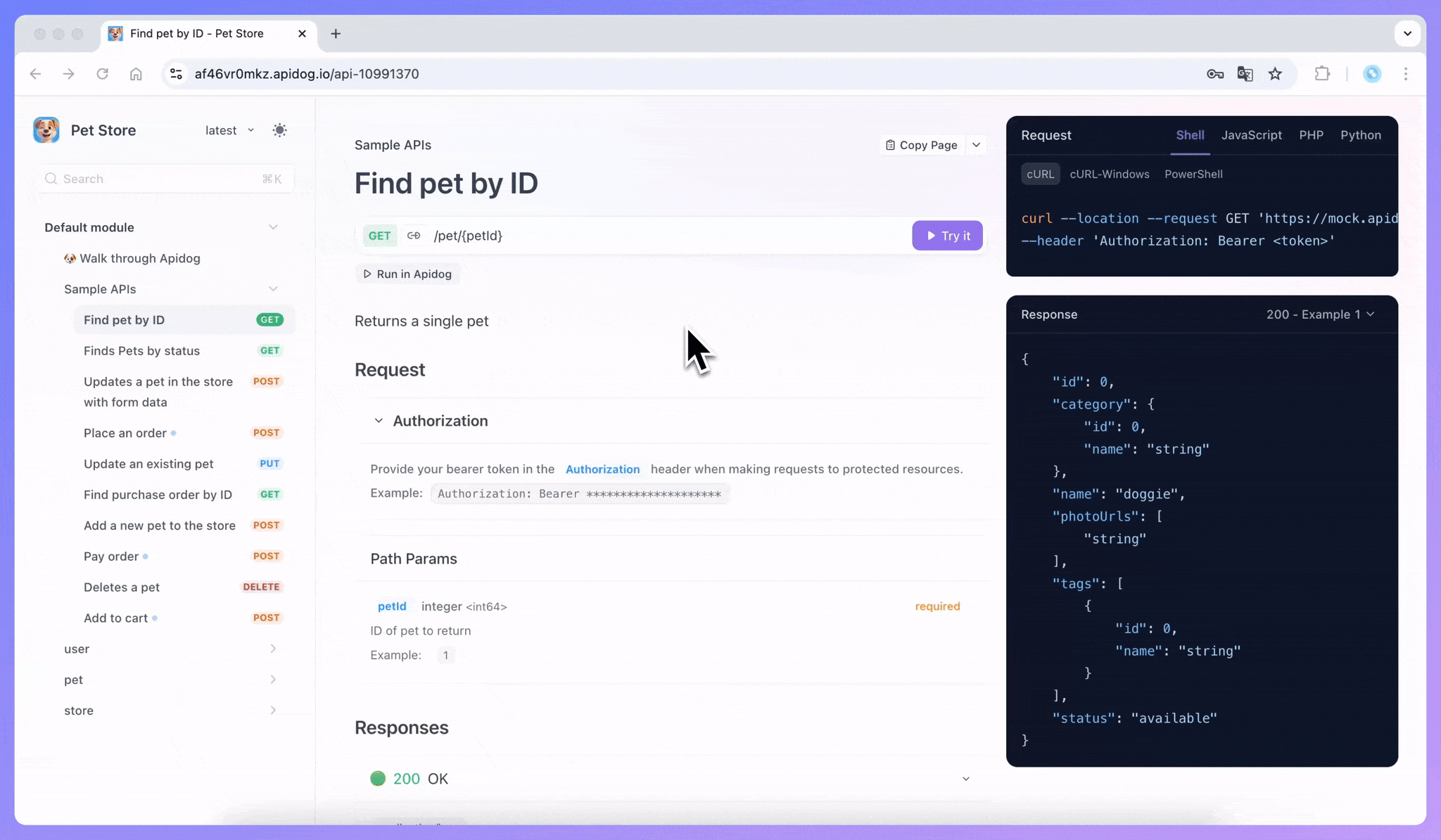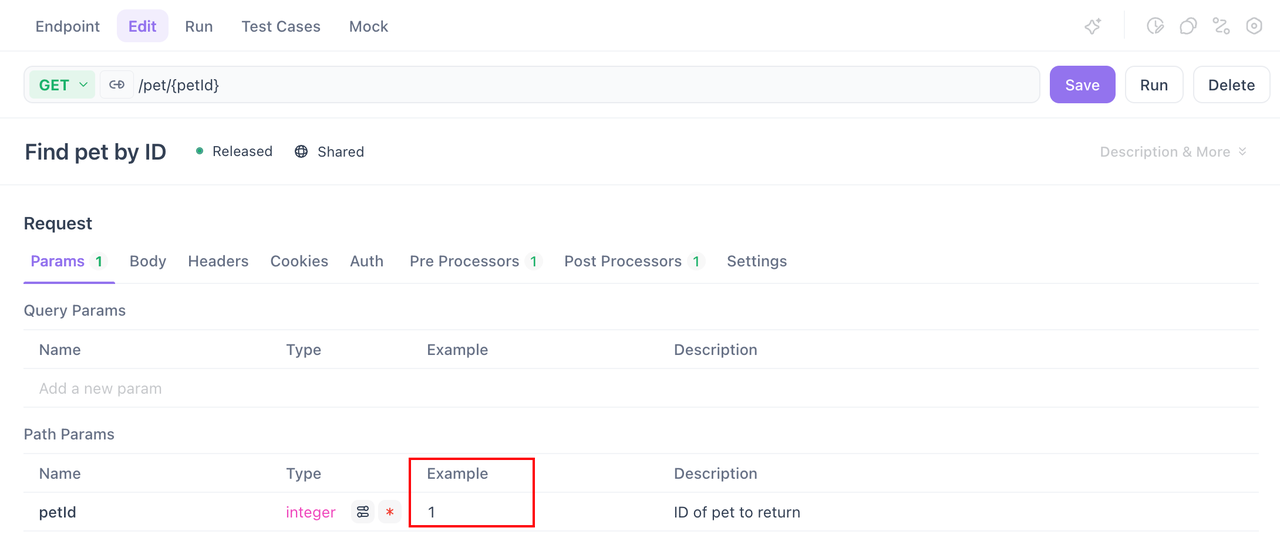If you're building APIs in 2025, one thing becomes obvious pretty quickly: having good API documentation is no longer a luxury; it's a necessity. Whether your consumers are internal microservice teams or external partners, they expect clean, interactive documentation that just works.
But here's where most teams hit a wall. You don't just need API documentation…
You need API documentation with authentication built in.
Meaning:
- Users can sign in or authenticate directly inside your docs
- They can test endpoints securely
- You can manage access (public, private, restricted)
- You can preview how the API behaves with real tokens
- You can control who sees what
Most traditional API documentation generators Swagger UI, Redoc, Stoplight Elements, don’t handle authentication elegantly. They visualize your API, sure. But auth? Debugging? Secure online testing? Version control? Access control? Private sharing?
Not so much.
This is why more developers and enterprise teams are looking for API docs generators with built-in authentication support.
And if you're researching this topic right now, you're in luck, because one of the best tools on the market is Apidog. Not only does Apidog generate beautiful, interactive API docs, but it also includes authentication handling, secure API debugging in published docs, role-based visibility, and integration with your spec without requiring you to manually configure complex environments.
Now, let's explore why authentication-aware documentation matters and how tools like Apidog are revolutionizing the developer experience.
The Authentication Documentation Problem
Think about the last time you integrated with a third-party API that required authentication. How many times did you:
- Copy-paste an example token that was already expired?
- Miss a required header because it was buried in the documentation?
- Struggle to understand why your perfectly formatted request was returning 401?
- Waste time switching between your code editor and the docs to test different authentication methods?
Traditional documentation creates what I call the "authentication gap", the frustrating chasm between reading about how to authenticate and actually successfully authenticating.
What Makes Documentation with Authentication Different?
Documenting endpoints that return public data is straightforward. But when you add authentication to the mix, several new challenges emerge:
1. The Credential Management Problem
How do you provide working examples without exposing real credentials? Static documentation often uses fake tokens that don't actually work, leaving developers guessing whether the problem is their code or the example.
2. The Header and Parameter Complexity
Authentication often involves multiple components:
- Authorization headers (Bearer tokens, Basic auth)
- Custom headers (API keys, client IDs)
- Query parameters (access tokens, signatures)
- Request body fields (for some authentication flows)
Keeping all these elements straight in static documentation is challenging for both writers and readers.
3. The Flow Demonstration Challenge
Some authentication methods, like OAuth 2.0, involve multi-step flows. Static documentation struggles to show how these flows work in practice, forcing developers to piece together the process from multiple pages.
4. The Error Handling Gap
When authentication fails, developers need to understand why. Static documentation can list possible error codes, but it can't show developers what their specific mistake was.
Introducing Apidog: The API Docs Generator With Auth Built In
Apidog positions itself as a full API lifecycle platform:
- Design
- Mock
- Test
- Document
- Debug
- Publish
But one feature that doesn't always get enough recognition is its authentication support within published API documentation. To understand why this is powerful, let’s break down the features in detail.
Setting Up Authentication-Aware Documentation in Apidog
The process of creating authentication-ready documentation in Apidog is surprisingly straightforward:
Step 1: Define Your Authentication Schemes

In your Apidog project, you can configure global authentication settings:
- API Key authentication with header or query parameter options
- Bearer token authentication
- Basic authentication
- OAuth 2.0 configurations with all the necessary endpoints
- and more to explore
Step 2: Apply Authentication to Endpoints

For each API endpoint, you specify which authentication method it requires. Apidog automatically includes the appropriate authentication fields in the generated documentation.
Step 3: Create Authenticated Examples

Instead of static examples, you can create working examples that respect your authentication setup. When developers interact with these examples in the published documentation, they're actually making authenticated requests to your API.
Step 4: Publish with Confidence

As outlined in Apidog's publishing guide, you can share your documentation publicly or with specific team members, knowing that the authentication features will work exactly as designed.
Auth Example in Documentation Published by Apidog
Here’s a common example using Bearer Token Auth.
In your project settings:
Auth Type: Bearer Token
Header Name: Authorization
Prefix: Bearer
Token: {{access_token}}In the published docs:
- Users click Authorize
- They paste or auto-generate their token
- The token is injected into all endpoint requests
This is exactly how modern APIs should behave.
Why You Should Use an API Docs Generator With Auth
Let’s summarize the key reasons.
1. Faster Onboarding
Developers test the API instantly.
2. No More "Token Missing" Support Tickets
Most new developers struggle with authentication.
Docs with auth solve this automatically.
3. You Control Access
Public, private, internal your choice.
4. Secure Data
You only expose what you need to expose.
5. It Makes Your API Look Professional
Interactive docs show maturity.
Especially when sharing with partners or clients.
6. Better Debugging
Apidog’s enhanced debugging tools are extremely helpful for devs and QA.
7. Eliminates Tool Switching
Everything happens inside one UI.
Best Practices for Authentication Documentation

Whether you're using Apidog or another tool, here are some key principles for documenting authentication effectively:
1. Provide Multiple Test Environments
Offer sandbox environments with test credentials so developers can experiment without affecting production data.
2. Show Complete Request Examples
Don't just show the authentication parts show complete, working requests that include all required headers, parameters, and body content.
3. Document Error Scenarios Thoroughly
Explain what each authentication error means and provide troubleshooting steps for common issues.
4. Keep Examples Current
Regularly update your examples and test credentials to ensure they remain functional.
5. Consider Different Experience Levels
Provide both quick-start guides for developers who want to get started fast and comprehensive references for those who need deeper understanding.
Final Verdict: Apidog Is the Best All-In-One API Docs Generator With Auth
If you’re searching for an API documentation generator that:
- Supports auth
- Supports debugging
- Supports private/public publishing
- Supports secure token handling
- Supports OAuth2
- Supports interactive testing
- Supports environments and variables
- Supports collaboration
- Supports exporting
Then Apidog is easily the best option in 2025, it's simple enough for solo developers, powerful enough for enterprise teams and it’s free to get started.



